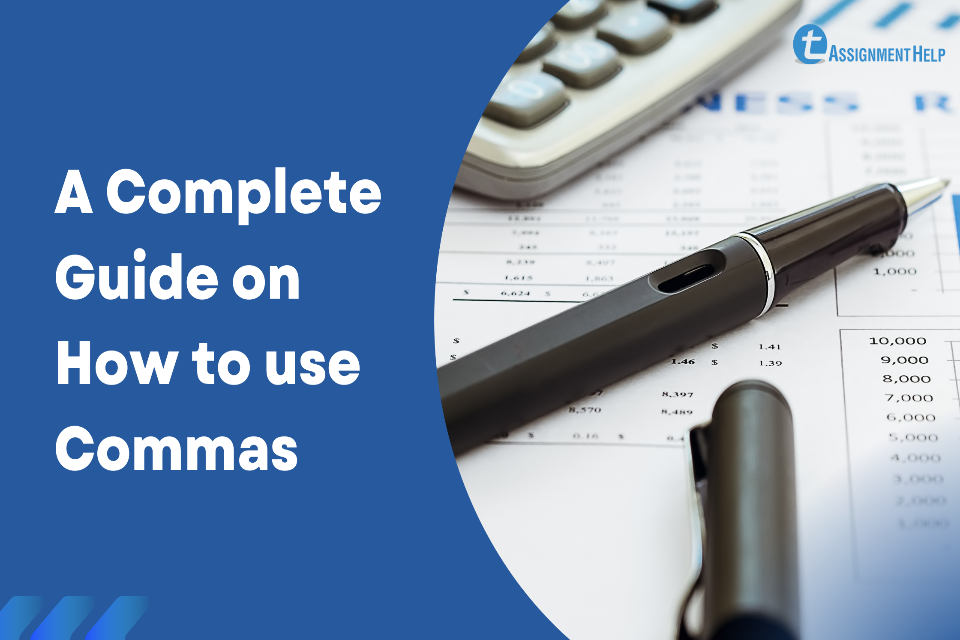A Complete Guide on How to use Commas

Deductive reasoning is a logical process that leads from broad concepts to conclusions. On the other hand, inductive reasoning starts with individual observations and leads to broad generalizations.
Deductive reasoning is sometimes known as top-down reasoning or deductive logic.
Deductive reasoning is frequently mixed up with inductive reasoning. On the other hand, inductive reasoning concludes by moving from the particular to the general.
Deductive reasoning: Definition
In deductive reasoning, you’ll frequently make an argument on a particular viewpoint. Then, by combining several premises, you can draw an inference or conclusion.
A premise is a statement that establishes the foundation for a theory or broad notion. It is a widely recognized idea, fact, or rule. Conclusions are claims that are backed up by evidence.
Arguments using deductive logic
You’ll frequently start with a premise and add another in a basic deductive logic argument. Next, based on two essential premises, you conclude. It is known as the “premise-premise-conclusion” structure.
Examples of deductive logic arguments
Premise: Every insect has the same number of legs: six.
Premise: Spiders have a total of eight legs.
Conclusion: Consequently, spiders aren’t insects.
Premise: When an acid is added to a blue litmus paper, it becomes red.
Premise: After I poured some liquid on the blue litmus paper, it became red.
Conclusion: Consequently, the liquid has an acidic pH.
Validity and reliability
Two factors for evaluating deductive reasoning arguments are validity and soundness.
Validity
The validity, in this case, refers to the relationship between the premises and the conclusion. It is not to be confused with research validity.
The premises must logically justify and connect to the conclusion for an argument to be considered legitimate. However, the premises do not have to be true for an argument to be sound.
Valid (but false) deductive argument examples.
1st example
Flights are delayed if a rainbow appears.
Now there’s a rainbow.
As a result, flights have been delayed.
2nd example
Chilli peppers are all hot.
Tomatoes are classified as chilli pepper.
As a result, tomatoes are hot.
Both of these points are well-made. Even if the premises are entirely false, they are connected so that you may reasonably derive the conclusion.
Your premises may be correct, but that does not ensure a correct conclusion in an invalid argument. For example, your conclusion could be correct by accident, but your argument is still faulty if it does not logically flow from the link between the assertions.
Invalid deductive argument examples.
1st example
Leopards have spots on their bodies.
My pet lizard is spotted.
As a result, my lizard is a leopard.
2nd example
The White House is home to all US presidents.
The White House was Barack Obama’s home.
As a result, Barack Obama was elected President of the United States of America.
Both are incorrect because the validity of the premises does not always imply the truth of the conclusion. You arrive at the proper conclusion in the second case, but both arguments have the same erroneous format.
Soundness
Only valid arguments with truthful premises are considered sound. All erroneous arguments are unsound.
You’re sure to reach a correct conclusion if you start with valid premises and a sound argument.
Sound deductive reasoning examples
1st example
When the weather is bad, flights are delayed.
Right now, we’re dealing with some severe weather.
As a result, flights have been delayed.
2nd example
All fruits include seeds and are developed from flowers.
Tomatoes are made up of seeds and are formed from flowers.
As a result, tomatoes are considered fruits.
The use of deductive reasoning in research
Deductive reasoning is widely applied in scientific studies, mainly connected with quantitative research.
You may have come upon the hypothetico-deductive technique while doing research. It’s a scientific approach for determining whether real-world facts support your theories.
The approach is employed in both academic and non-academic research.
Deductive research problem example.
You work for a huge insurance company as an internal researcher. The company is now battling a rising degree of employee disengagement, and you’ve been entrusted to provide a solution.
The following are typical steps in doing deductive research:
- First, compose a problem statement for a research issue you’ve chosen.
- Create a testable hypothesis.
- Collect data using relevant methods.
- Fourth, evaluate and put your data to the test.
- Finally, decide on whether to dismiss your null hypothesis.
Your theories must, above all, be disprovable. If they’re not, you won’t be able to tell whether your findings back them up.
Deductive research method example
You believe that switching from a 5 to a 4-day workweek (without a pay cut) will aid in the reduction or prevention of disengagement by boosting employee well-being.
Your major hypothesis is as follows: Employee well-being will increase by shifting to a 4-day workweek. According to your null hypothesis, there will be no change in staff motivation before and after the modification.
Before and after the modification, you conduct monthly verifications to get data on employee satisfaction. You see a 25% boost in employee happiness following the modification in the workweek when you analyze the data.
You use a statistical test to determine that your findings are statistically significant. You reject the null hypothesis and conclude that your findings confirm your hypothesis.
The difference between inductive reasoning and deductive reasoning
Deductive reasoning is done from the top-down, whereas inductive reasoning is done from the bottom up.
Deductive reasoning begins with broad concepts and progresses through inferences to conclusions. First, you create a hypothesis based on theories. Then, you verify that hypothesis through inferential statistics and conclude based on empirical evidence.
Because you start with observations and work your way up to a theory, inductive reasoning is also a hypothesis-generating strategy. It’s an exploratory technique that’s frequently used before conducting deductive research.
Most research initiatives use both inductive and deductive reasoning methodologies in practice.
Frequently Asked Questions
What is a comma?
Ans. Comma is a punctuation mark that indicates a pause between sections of a sentence or in a sequence of items.
How to use commas?
Ans. Commas are generally used to signify a list of items or a change between different sentence sections.
What is the importance of using a comma?
Ans. A comma adds clarity to your writing and helps break large sentences, making them easier to read.
Total Assignment Help
Incase, you are looking for an opportunity to work from home and earn big money. TotalAssignmenthelp Affiliate program is the best choice for you.
Do visit :https://www.totalassignmenthelp.com/affiliate-program for more details
Total Assignment help is an assignment help Online service available in 9 countries. Our local operations span across Australia, US, UK, South east Asia and the Middle East. With extensive experience in academic writing, Total assignment help has a strong track record delivering quality writing at a nominal price that meet the unique needs of students in our local markets.
We have specialized network of highly trained writers, who can provide best possible assignment help solution for all your needs. Next time you are looking for assignment help, make sure to give us a try.
Looking for Assignment Help from Top Experts ?
Get the best Assignment Help from leading experts from the field of academics with assured onetime, 100% plagiarism free and top Quality delivery.



